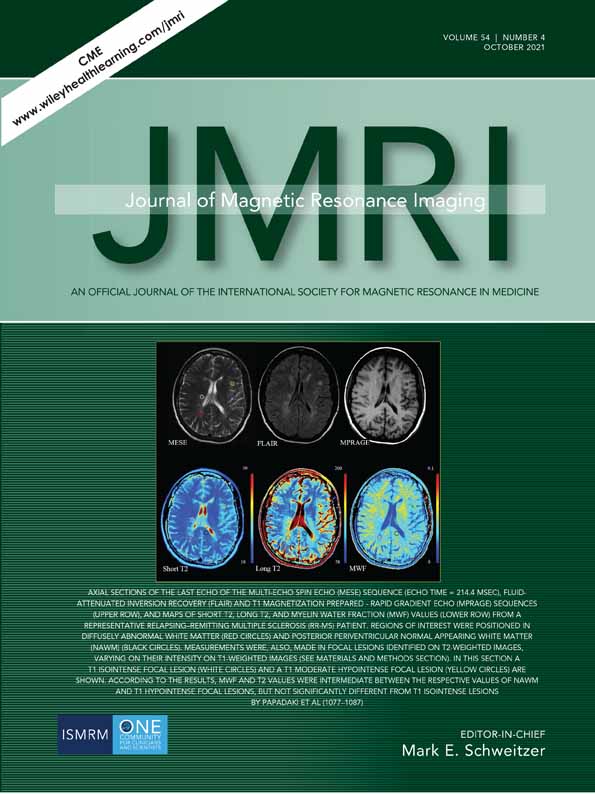Diagnostic Accuracy of Spiral Whole-Heart Quantitative Adenosine Stress Cardiovascular Magnetic Resonance With Motion Compensated L1-SPIRIT
Abstract
Background
Variable density spiral (VDS) pulse sequences with motion compensated compressed sensing (MCCS) reconstruction allow for whole-heart quantitative assessment of myocardial perfusion but are not clinically validated.
Purpose
Assess performance of whole-heart VDS quantitative stress perfusion with MCCS to detect obstructive coronary artery disease (CAD).
Study Type
Prospective cross sectional.
Population
Twenty-five patients with chest pain and known or suspected CAD and nine normal subjects.
Field strength/Sequence
Segmented steady-state free precession (SSFP) sequence, segmented phase sensitive inversion recovery sequence for late gadolinium enhancement (LGE) imaging and VDS sequence at 1.5 T for rest and stress quantitative perfusion at eight short-axis locations.
Assessment
Stenosis was defined as ≥50% by quantitative coronary angiography (QCA). Visual and quantitative analysis of MRI data was compared to QCA. Quantitative analysis assessed average myocardial perfusion reserve (MPR), average stress myocardial blood flow (MBF), and lowest stress MBF of two contiguous myocardial segments. Ischemic burden was measured visually and quantitatively.
Statistical Tests
Student's t-test, McNemar's test, chi-square statistic, linear mixed-effects model, and area under receiver-operating characteristic curve (ROC).
Results
Per-patient visual analysis demonstrated a sensitivity of 84% (95% confidence interval [CI], 60%–97%) and specificity of 83% [95% CI, 36%–100%]. There was no significant difference between per-vessel visual and quantitative analysis for sensitivity (69% [95% CI, 51%–84%] vs. 77% [95% CI, 60%–90%], P = 0.39) and specificity (88% [95% CI, 73%–96%] vs. 80% [95% CI, 64%–91%], P = 0.75). Per-vessel quantitative analysis ROC showed no significant difference (P = 0.06) between average MPR (0.68 [95% CI, 0.56–0.81]), average stress MBF (0.74 [95% CI, 0.63–0.86]), and lowest stress MBF (0.79 [95% CI, 0.69–0.90]). Visual and quantitative ischemic burden measurements were comparable (P = 0.85).
Data Conclusion
Whole-heart VDS stress perfusion demonstrated good diagnostic accuracy and ischemic burden evaluation. No significant difference was seen between visual and quantitative diagnostic performance and ischemic burden measurements.
Evidence Level
2
Technical Efficacy
Stage 2




